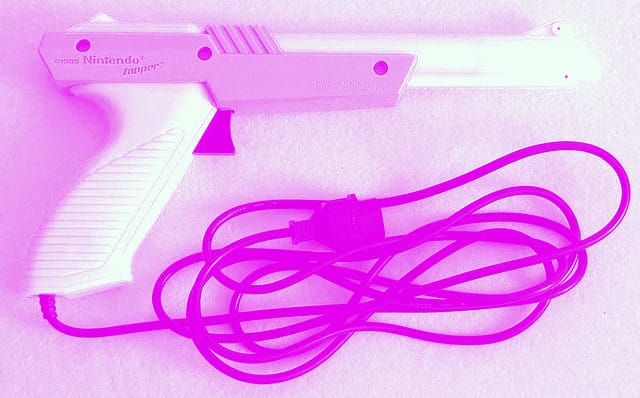This is how the light gun for Duck Hunt works

Every child of the Nintendo era was amazed at the wonders of the light gun. You had this plastic weapon; you pointed it at the screen; there was a flash; ducks/people died.
“Any sufficiently advanced technology is indistinguishable from magic,” Isaac Clarke said. And magic the light gun was indeed.
Well, it turns out there’s actual science at work which is such a bummer as the wizard theory was one of my chief hypotheses for explaining childhood wonder the past two decades. The folks at Mental Floss explain — the light gun was actually a receiver. This should blow your mind.
When you point at a duck and pull the trigger, the computer in the NES blacks out the screen and the Zapper diode begins reception. Then, the computer flashes a solid white block around the targets you’re supposed to be shooting at. The photodiode in the Zapper detects the change in light intensity and tells the computer that it’s pointed at a lit target block — in others words, you should get a point because you hit a target. In the event of multiple targets, a white block is drawn around each potential target one at a time.
The diode’s reception of light combined with the sequence of the drawing of the targets lets the computer know that you hit a target and which one it was. Of course, when you’re playing the game, you don’t notice the blackout and the targets flashing because it all happens in a fraction of a second.
Amazing.



